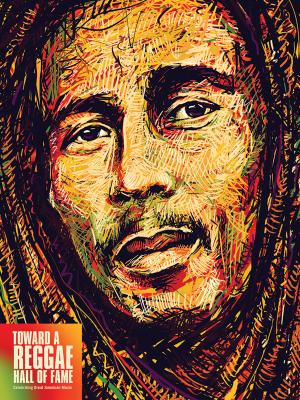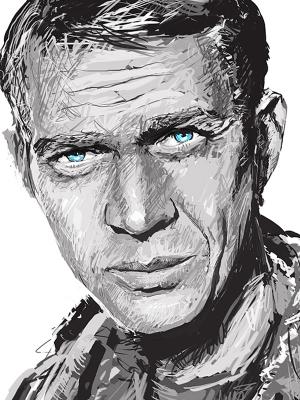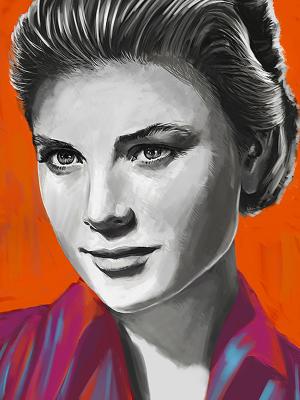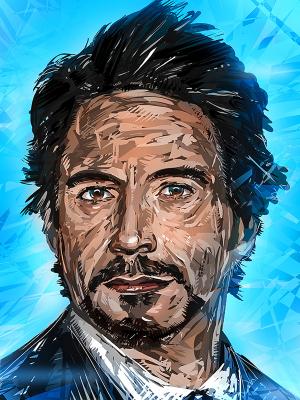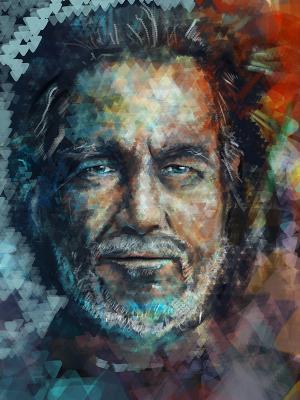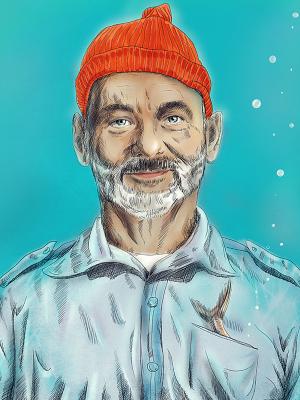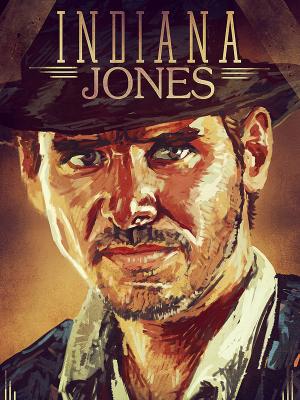marley - balazs pakozdi
first place winner of the international reggae poster contest, twenty thirteen
balazs pakozdi is a hungarian digital artist, designer and concept artist based in worcester, united kingdom. he studied graphic design and multimedia with an emphasis on drawing and painting. he is also a self taught illustrator who works in digital media. his aim is to create dynamic and visually attractive portraits that immediately draw the viewers’ attention. balazs’s astonishing illustration of bob marley amazed the jury panel of the international reggae poster contest, twenty thirteen, who voted for his win!
interview with maria papaefstathiou
Congratulations Balazs! Tell us how you found out about the International Reggae Poster Contest and what was it that attracted you to participate?
I found the IRP Contest on a website called graphiccompetitions.com, which finds and promotes a range of different graphic design, illustration, animation and photography competitions. Although I signed up for the contest last year, I failed to get into the top 100, so decided to try it again this year. Participating again was an inevitable decision for me as Reggae is one of my favorite music genres, specifically Ska and Rock Steady from the late 60’s and 70’s.
What’s it like having your work selected 1st place in the International Reggae Poster Contest 2013?
First of all, it is a great honor to be participating on the IRP Contest and also feels fantastic to be able to represent the Reggae music and culture through my artwork. I was really surprised by the fact that my work had been selected as 1st place, primarily because I had illustrated Marley again as I did last year. Due to his immense popularity it is a natural assumption to have Marley to come to mind in relation to Reggae for most people. However, when I submitted the application, I felt that I could have done something else just for the fun of it.
Reggae is quite popular in the UK, when did you become attracted to the genre?
Reggae is one of my favorite music genres because of its simplicity and ‘feel good vibrations’. It gives me positive energy and I can easily reach the ‘flow’ when I work on a project. My favorite types of Reggae are Ska and Rock Steady so I often listen to Bob Marley and the Wailers. One of my all time favorite reggae songs is the ‘Kell egy haz’ from the famous Hungarian Reggae Band, called LB27 (Ladanybene 27) which I relate to great fun and funny memories. They were one of the first (if not the first) Reggae Band in Hungary.
As a young boy in the eighties and early nineties, I was often listening to 70’s classic rock music, such as Eric Clapton, so the reggae music was just a step away. If my memory is correct, I probably got to know Bob Marley from Clapton’s “I Shot the Sheriff” version; I was completely captivated by his style and music at that time.
How would you summarize your experience with the International Reggae Poster Contest? Did it live up to your expectations?
Yes, it absolutely lived up to my expectations! As we know, Reggae has different styles, such as Rock Steady, Roots and Dancehall. Furthermore, loads of various music genres and styles have sprung up from Reggae, such as Hip Hop, Rap and Jungle. Because of this huge variety of Reggae music, many designers and artists have incorporated different meanings and emotions with these tracks, bands and musicians. Therefore, the International Reggae Poster Contest demonstrates some of the most creative posters from around the world, which can be inspiring to other designers and artists. An inspiring and motivational power can also generate more positive energy that could be a huge benefit for the creative community and the people around the world. I believe that a strong, creative and healthy art and design community (or global movement, like the IRPC) can change and transform the world piece by piece and keep the traditions, like Reggae, alive. Hence, despite the diversity and variety of the contest, each poster conveys the same important message: the respect and love of Reggae music and the Rasta lifestyle.
Tell us a bit more about your design, what is your design philosophy and meaning behind your winning poster?
As a designer, my main responsibility is to find solutions and outcomes that convey clear (visual) messages and meanings for a wide range of audience. Therefore, I always knew that a poster could be much more than just a ‘good-looking’ 2D surface. It has the power to generate different emotions from the audience and keep major values alive. As we know, the IRP Contest’s objective is to reinforce awareness of Reggae and celebrate its positive impact on the world. With this in mind, I decided to create a visually strong poster that could remain symbolic and iconic after many years and convey positive emotions to the Jamaican people.
In addition, another goal was to create a dynamic poster that represents Reggae as an incredibly colorful style of music. During the working process, I focused on the three main Rasta colors; red, green and yellow that could draw the onlooker’s attention immediately. I used loads of wavy lines that also demonstrate the Reggae music’s rhythm, (heart)beats, drums and ‘feel good’ tunes.
Your fantastic poster captured the iconic personality of Bob Marley, why did you choose him as the subject of your poster?
As mentioned earlier, I wanted to create a symbolic image, especially for the Jamaican people who live in Kingston, for this reason I chose the iconic musician, Bob Marley, whose personality also represents freedom, joy and love.
Your illustrations have a very organic feel, did you study fine art? Share with our readers how you developed this technique and style.
Yes, I studied traditional drawing and painting at school and at the university. After that I specialized in digital painting and illustration because of the technology’s ‘cleanness’ and efficient usability. I started to paint portraits from famous and legendary movie stars several years ago because Film/Cinema is my favorite artistic media and (at first) it was really challenging painting subject for me. Every person has a totally different facial expression and for this reason it’s a huge challenge to depict them perfectly.
It was also really important to learn from my mistakes, not just technically but mentally and I’m still learning from them. During my university studies, I realized that my mind generates the biggest obstacles when I am painting. A designer who works on a design project for a client has to use his critical thinking, problem solving skills and creativity to find the best solution(s) for a problem. But an artist, who paints a portrait, should be open-minded and mentally peaceful. His/her main purpose is to depict an image without continuous judgments (critical thinking) and ‘chatty’ brain. If we can reach this pleasant mental state we will be easily in the ‘zone’ that helps us to create a piece of work that will come from the soul instinctually and instantly. It needs loads of practice of course, but I guess the perfect and well balanced mindset is a key element besides the painting technique and talent. In brief, awareness is the most important step to reach a pleasant mental state that helps us to express ourselves more easily and instinctively.
As a designer you should stick to the rules (well, most of the time) because of your client’s brief and a specific target audience, but as an artist you should break the rules to reach different experimental levels. At first, you should practice a lot and learn everything you can to develop your skills and improve your knowledge, but later on, you should forget everything you have ever learnt. Your inner talent will start to rise when you forget the rules. It also means that your style is getting stronger and stronger because you create something special and different than others. I hope that makes sense.
How do you approach a design such as the winning piece? Do you refer to a number of Bob Marley images and why this particular portrait?
Honestly, I didn’t do any design or art related research about Bob Marley. The main reason is that our brain sees images and if I’m doing deep research before the painting process my mind will remember these references (photos, paintings) which could be an obstacle during the painting process. Your mind will try to copy these references. Therefore, I was starting to listen to The Wailers and just started to paint the poster. I used only one portrait photo of Marley that was the main reference for me. I wanted to depict a portrait of him where you can see peace, calmness and some kind of sadness in his eyes, because of his tough childhood.
Your illustrations are quite impressive, especially your portraits. Is there any particular artist or illustrator that inspires you?
I have many favorite artists that inspire me, such as Jae Lee, Martin Ansin, Mitchell Breitweiser, Russ Mill, Tavis Coburn, Ruben Ireland and Michael Kutsche.
What are your thoughts on our objective to have the Reggae Hall of Fame museum built in Kingston, Jamaica?
For me the IRPC’s objective and vision are really inspiring and I really appreciate it because as a global movement, that hopefully continues to grow, may have the power to give hope and joy to the Jamaican people. Furthermore, a contemporary architectural home like The Reggae Hall of Fame Museum can also help sustain the Reggae music’s traditional culture and values. Last but not least the Museum and the support for the Alpha Boys’ School can also give positive energy to the people in Kingston. Music and art will always be one of the strongest forces in every culture that can change someone’s life in a positive way.
I see you were a magazine designer and editorial illustrator for Axel Springer Publishing in Budapest. Tell us a bit more about your experience working there?
It was absolutely a great experience working as a layout designer. I spent more than five years in an editorial environment which was a brilliant way to develop my technical and communication skills. Every day was a challenge, because I was working on a weekly magazine, but it was worth it. When you are facing different creative challenges day by day, you can improve yourself, because you have to leave your comfort zone. If you are within your comfort zone, you can’t learn new things and there is no chance for improving. I worked with great people around me, but after five years I decided that I have to move on and came to the UK. I think, it was one of my best workplaces ever.
When did you get you first break as Graphic Designer?
Well, it was more than ten years ago when I won a logo design competition in Hungary. I wanted to stay in the creative field as a freelance designer, but I started to work as a Magazine Designer for Axel Springer Hungary. Great people, various layout projects and fixed salary…
One of the contest objectives is to support the Alpha Boys’ School in Kingston, Jamaica. What is your take on the school’s historical role in Reggae music?
The Alpha Boys’ School (or Alpha Cottage School) that was established in 1884, is playing a significant role in Reggae music because of its brilliant musical tuition and music program, for this reason supporting the school is really important. And of course, as we know, it is the birthplace of Reggae. We need to keep the traditional Reggae music alive for the future because it can give a great purpose for the young Jamaican music pioneers.
The world is changing pretty fast. Nowadays, the most popular (pop) music songs are made by mostly electronic and digital instrumentals, but I guess Reggae will always have a special place in the music world because of its traditional roots. What we have or need to do is support the School and the young, talented (Jamaican) generation in every way possible.
Where do you work now and how different is it working in the UK compared to Hungary?
I am a freelance designer and digital artist so I work at home most of the time. In my opinion is that there aren’t any working differences in the British and Hungarian creative field because most of the projects are straightforward (and the same); You get the brief from a client that you should finish at your best until the deadline all the time.
The biggest difference between the UK and Hungary could be the cultural differences and mentality. You have more working and educational opportunities (training and courses) in the UK than in Hungary, but every country and nation has its own strengths and weaknesses. Nonetheless, I do love both countries.
What are you working on now?
I’m currently working on several low budget British films as a concept artist, poster and title designer. Besides this, I have various design and illustration projects and I’m also working on my own short cinematic animation.
What would you like to see as a career benefit coming out of wining this International design contest?
I haven’t thought of it yet. Hopefully, I will be working on new exciting design or film projects with new clients from around the world. But in the meantime, I would be the happiest person if the Bob Marley poster could generate some support for the Alpha Boys’ School.
view balazs' site
check the international reggae poster contest
maria's graphicart news
